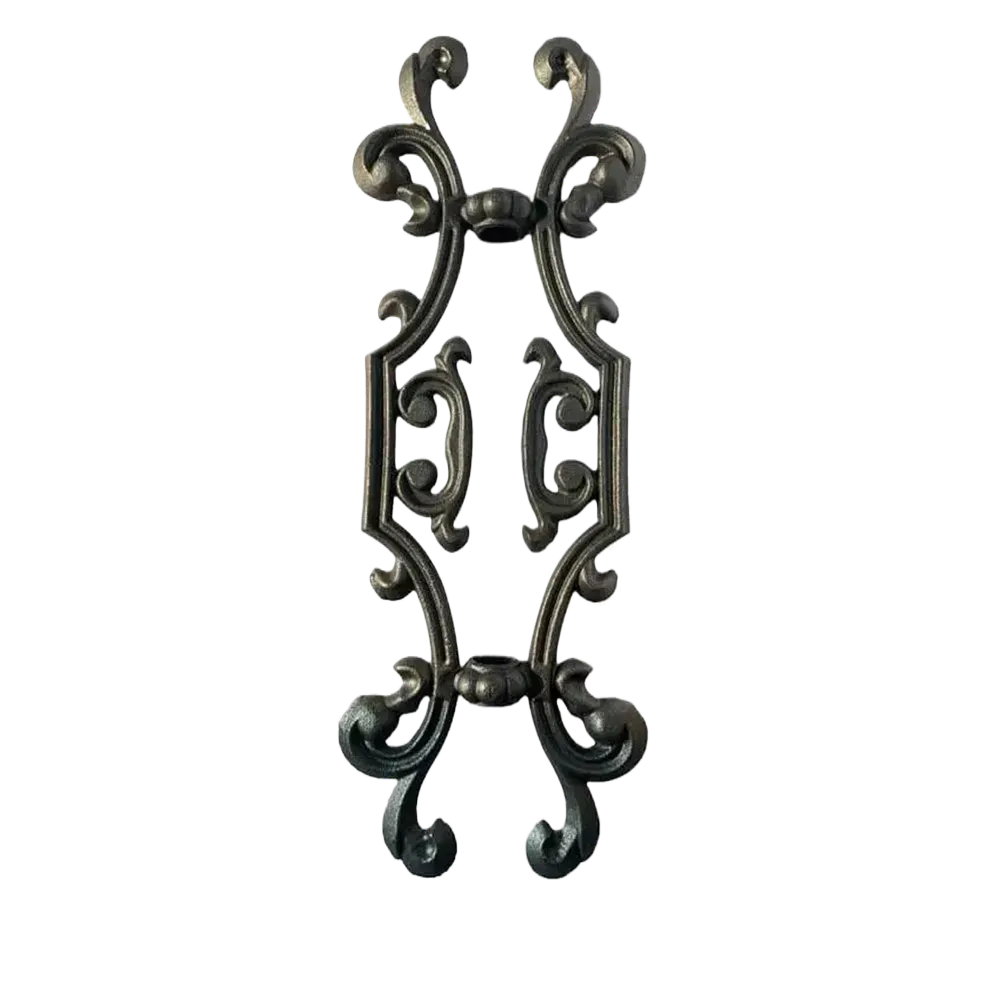Durable Cast Iron Spears and Decorative Finials for Garden and Home Design
The Art and Craft of Cast Iron Spears and Finials
Cast iron has long been a cherished material in the world of artistry and architecture. Known for its durability, versatility, and aesthetic appeal, it has been utilized in various forms throughout history. Among the more fascinating applications of cast iron are spears and finials, which, though often overlooked, play a significant role in both functional and decorative capacities.
The Historical Significance of Cast Iron
The use of cast iron dates back to ancient times, with roots traced to 5th century BC in China. However, it was during the Industrial Revolution in the 18th and 19th centuries that cast iron reached its zenith. Factories began to produce mass quantities of this material, revolutionizing construction and design. As cities industrialized, cast iron elements, such as railings, columns, and decorative fixtures, became ubiquitous.
Spears and finials made from cast iron serve as prime examples of the material's adaptability. They were often crafted not only for utility but to elevate the aesthetic appeal of structures and landscapes. These elements were typically added to fences, gates, and rooftops, providing a sense of grandeur and permanence.
The Craftsmanship Behind Cast Iron Spears and Finials
Creating cast iron pieces involves a meticulous process that blends art and engineering. The journey begins with the design phase, where artisans and designers devise intricate patterns, balancing form and function. In many traditional designs, spear tops and finials feature motifs such as floral patterns, geometric shapes, or mythological figures, each contributing to the overall theme of the structure.
Once the design is solidified, artisans create a mold, usually from sand or a metal counterpart. Molten iron is poured into these molds and left to cool and solidify. This casting technique allows for the reproduction of highly detailed and complex designs, making it possible to maintain consistency and precision across numerous pieces.
After the iron has cooled, the final pieces go through various finishing processes. This can involve grinding, polishing, or painting to achieve the desired look. Many artisans opt for protective coatings to ensure longevity and resist corrosion, particularly for outdoor installations exposed to harsh weather conditions.
cast iron spears and finials

The Use of Spears and Finials
Spears and finials serve both practical and ornamental functions. On fences and gates, spear points provide security and deterrence against intruders. The sharp designs remind passersby of boundaries and the importance of respect for private property. Meanwhile, the elegant appearances of these elements enhance the overall aesthetic of a property, often reflecting the owner's taste and style.
Finials, typically placed at the top of posts, spires, or rooflines, serve not just as decorative caps but also as crowning elements that symbolize protection and completion. Many cultures attribute symbolic meanings to specific designs, such as the use of crosses in Christian architecture or ornate floral designs in more secular structures.
Contemporary Applications and Trends
Today, the use of cast iron spears and finials continues to thrive. Contemporary architects and designers value the historical elegance of cast iron, often incorporating it into modern designs. Urban parks, commercial buildings, and residential properties utilize these elements to bridge the old with the new, creating cohesive and timeless aesthetics.
Furthermore, with advancements in technology and an increased focus on sustainability, modern casting processes have evolved. There is a growing interest in artisanal casts that blend traditional techniques with eco-friendly practices, ensuring that the beauty of cast iron can be appreciated without compromising the health of our planet.
Conclusion
Cast iron spears and finials are far more than mere decorative elements; they are a testament to the artistry and engineering prowess of their creators. Their enduring appeal and versatility ensure that they remain relevant in contemporary design, linking the rich history of craftsmanship with modern aesthetics. As we continue to appreciate and incorporate these elements into our spaces, we honor the legacy of cast iron as both a functional material and a canvas for creativity.
-
Wrought Iron Components: Timeless Elegance and Structural StrengthNewsJul.28,2025
-
Window Hardware Essentials: Rollers, Handles, and Locking SolutionsNewsJul.28,2025
-
Small Agricultural Processing Machines: Corn Threshers, Cassava Chippers, Grain Peelers & Chaff CuttersNewsJul.28,2025
-
Sliding Rollers: Smooth, Silent, and Built to LastNewsJul.28,2025
-
Cast Iron Stoves: Timeless Heating with Modern EfficiencyNewsJul.28,2025
-
Cast Iron Pipe and Fitting: Durable, Fire-Resistant Solutions for Plumbing and DrainageNewsJul.28,2025
-
 Wrought Iron Components: Timeless Elegance and Structural StrengthJul-28-2025Wrought Iron Components: Timeless Elegance and Structural Strength
Wrought Iron Components: Timeless Elegance and Structural StrengthJul-28-2025Wrought Iron Components: Timeless Elegance and Structural Strength -
 Window Hardware Essentials: Rollers, Handles, and Locking SolutionsJul-28-2025Window Hardware Essentials: Rollers, Handles, and Locking Solutions
Window Hardware Essentials: Rollers, Handles, and Locking SolutionsJul-28-2025Window Hardware Essentials: Rollers, Handles, and Locking Solutions -
 Small Agricultural Processing Machines: Corn Threshers, Cassava Chippers, Grain Peelers & Chaff CuttersJul-28-2025Small Agricultural Processing Machines: Corn Threshers, Cassava Chippers, Grain Peelers & Chaff Cutters
Small Agricultural Processing Machines: Corn Threshers, Cassava Chippers, Grain Peelers & Chaff CuttersJul-28-2025Small Agricultural Processing Machines: Corn Threshers, Cassava Chippers, Grain Peelers & Chaff Cutters












